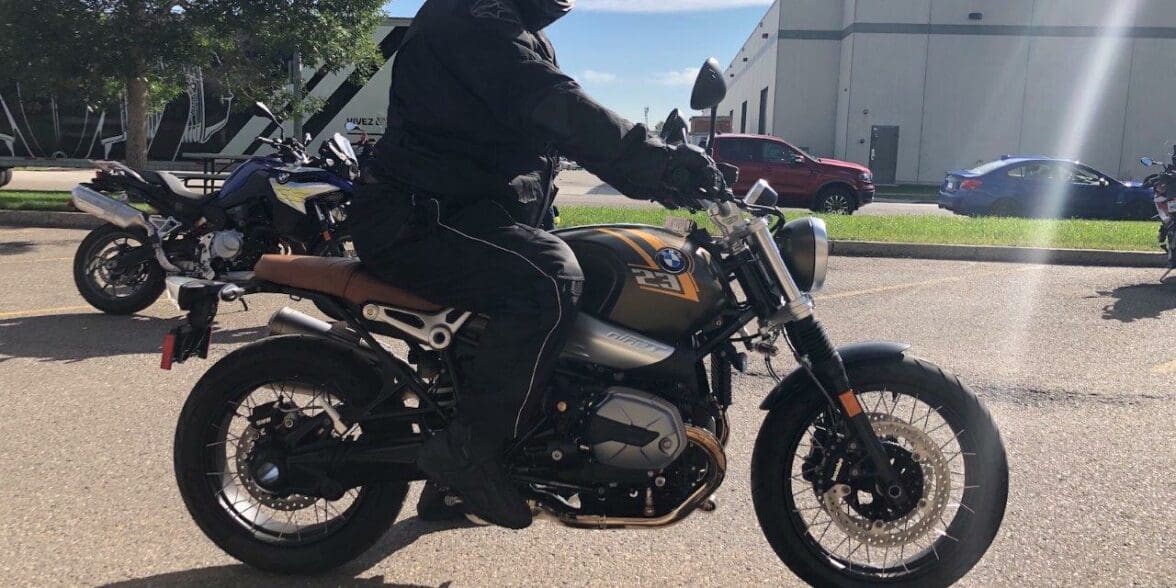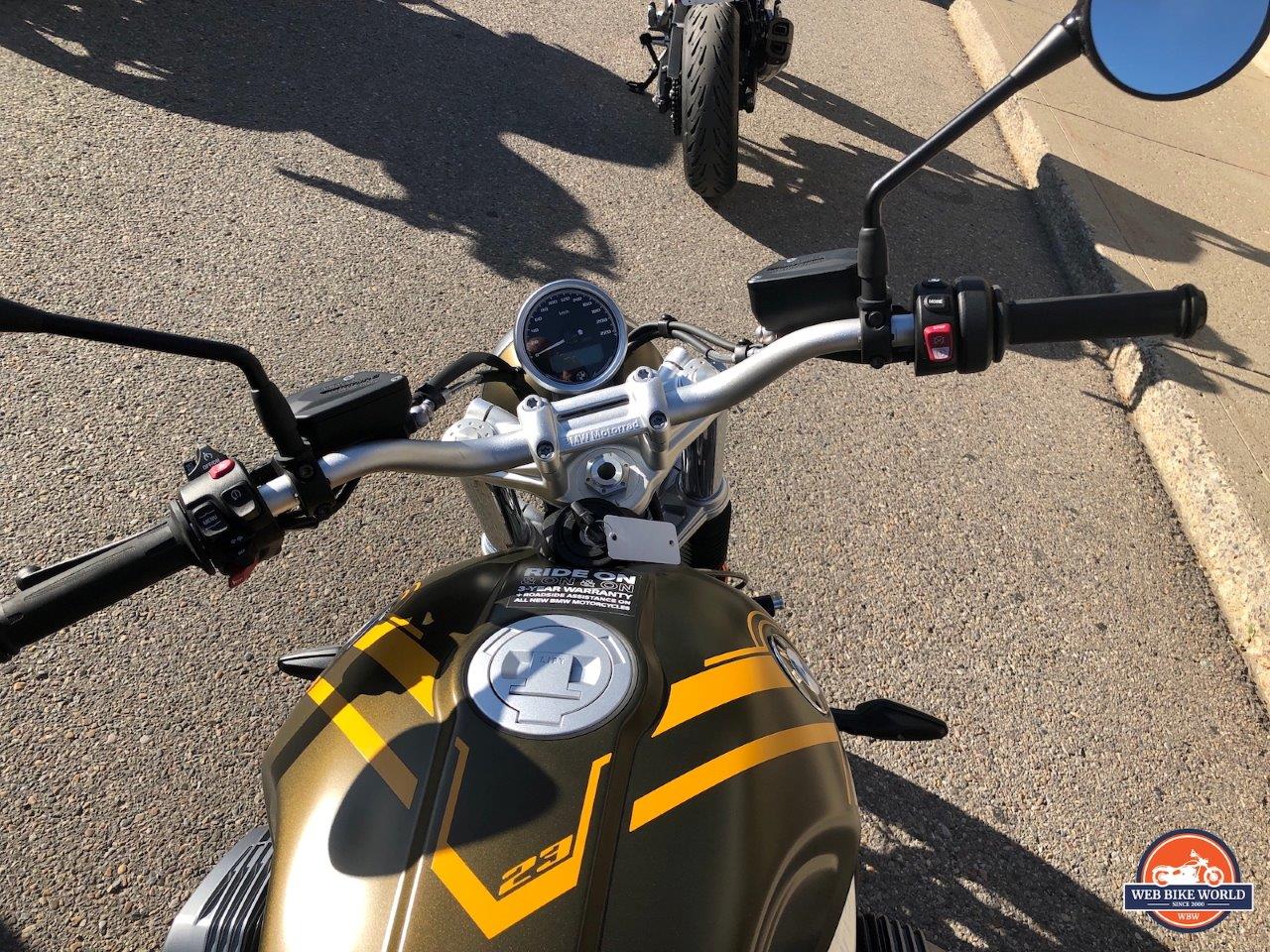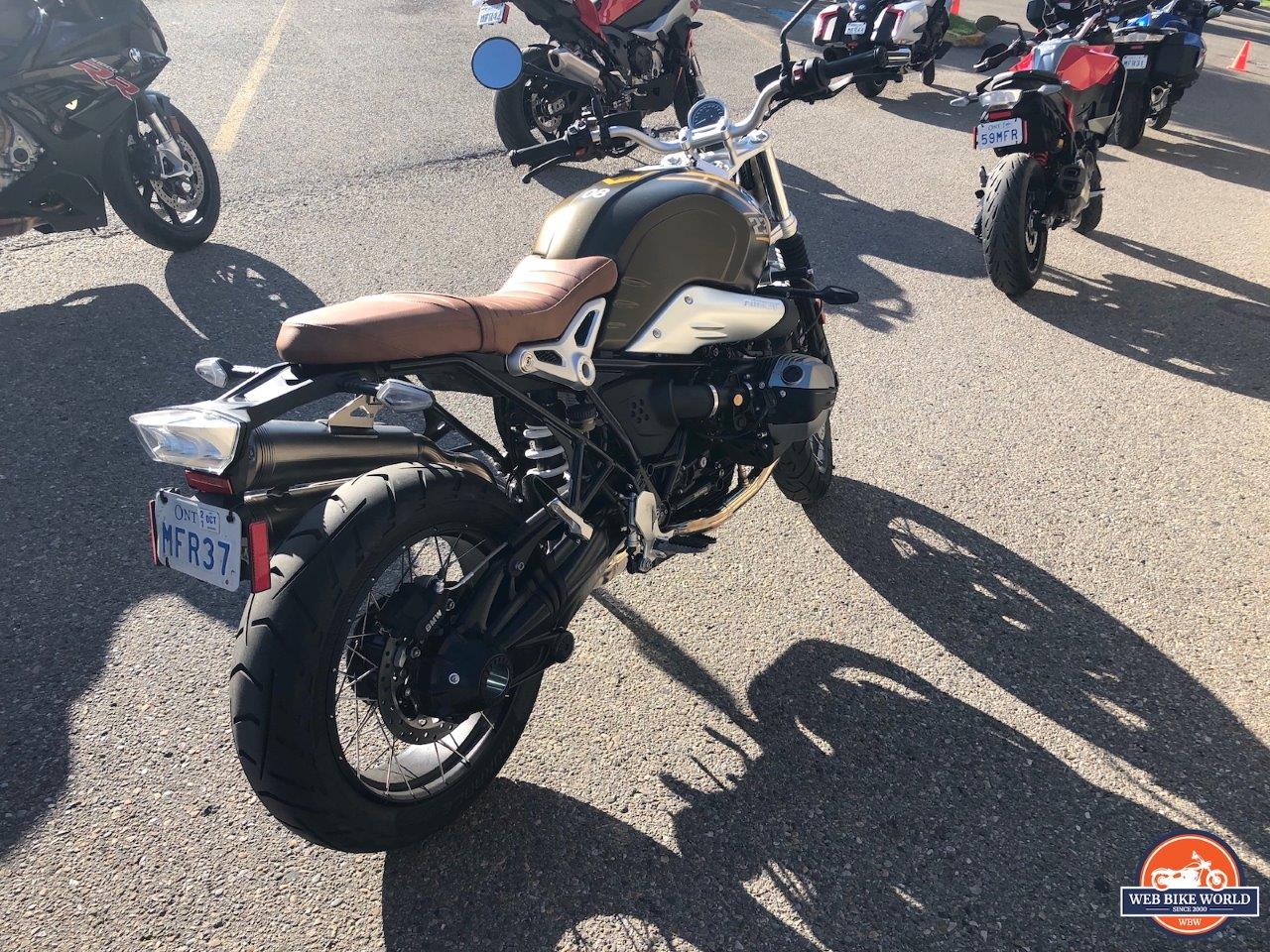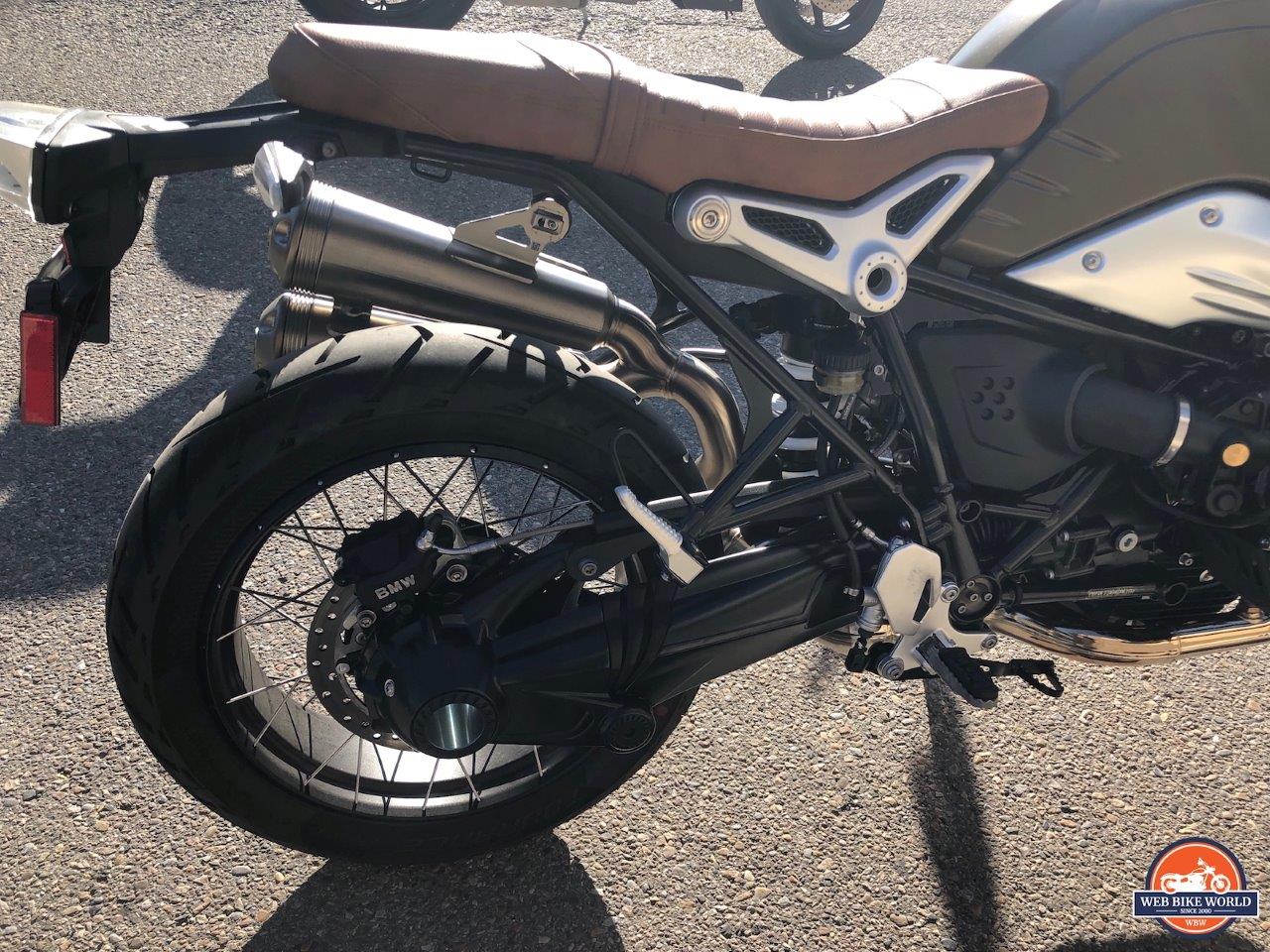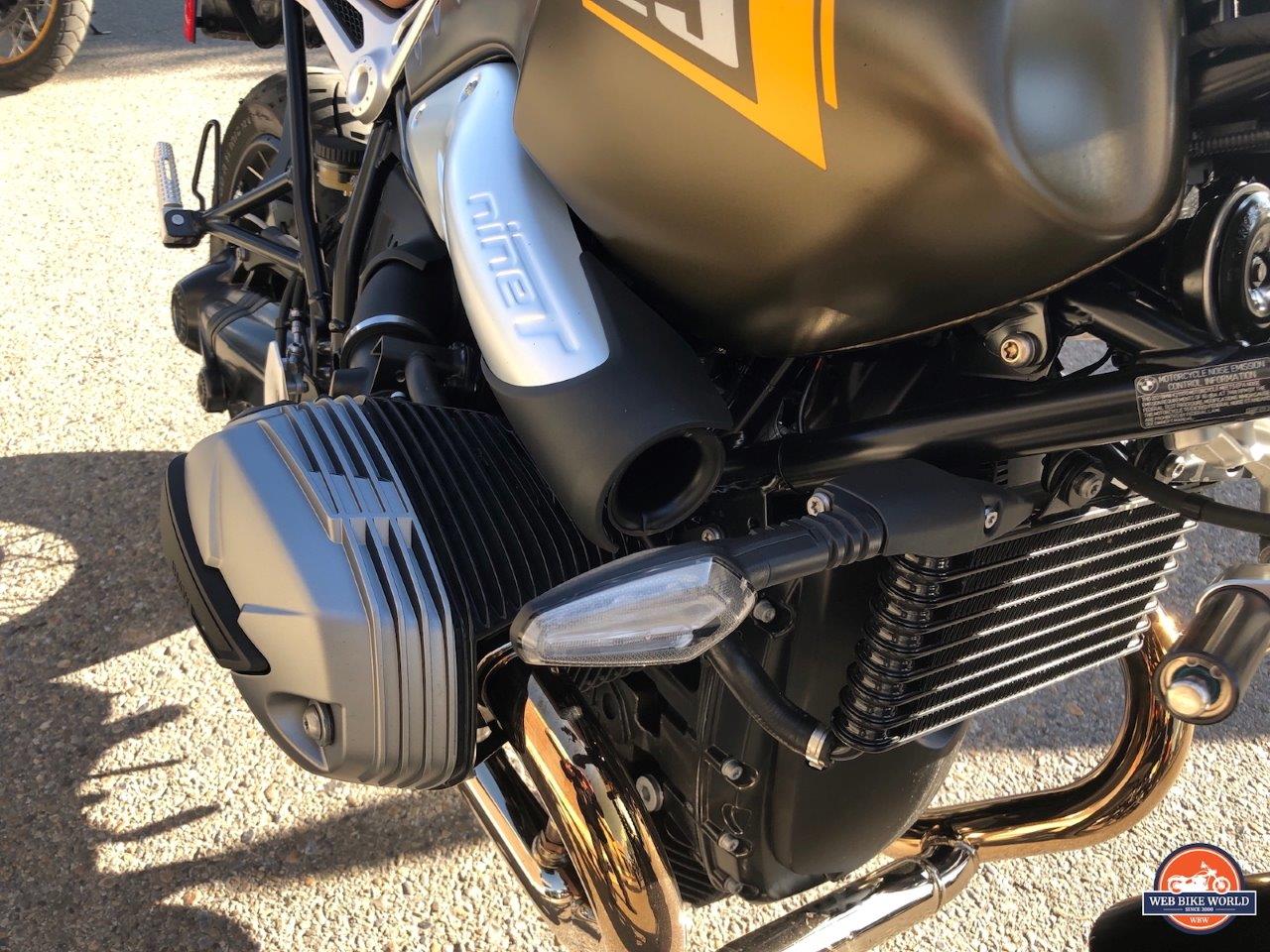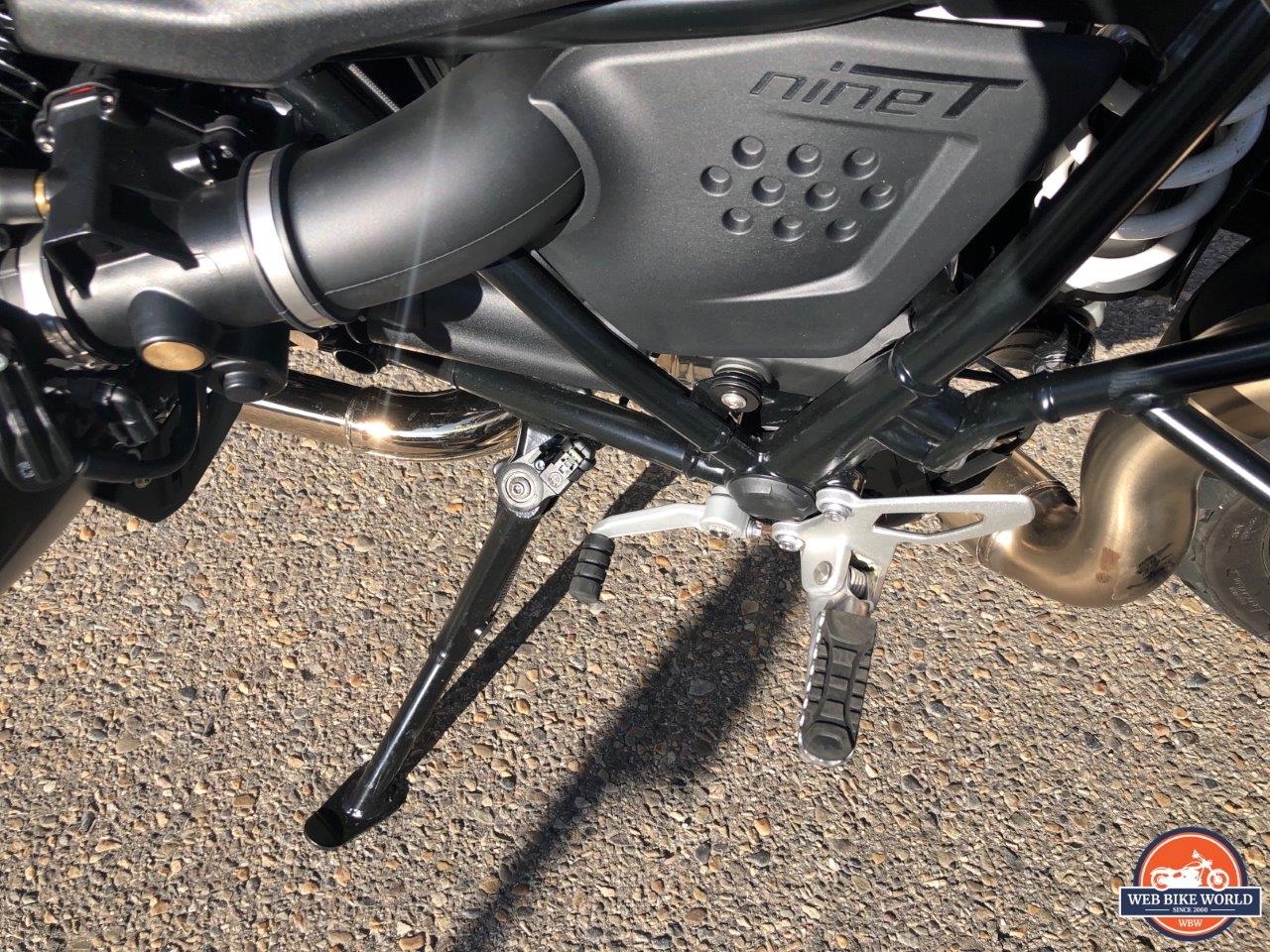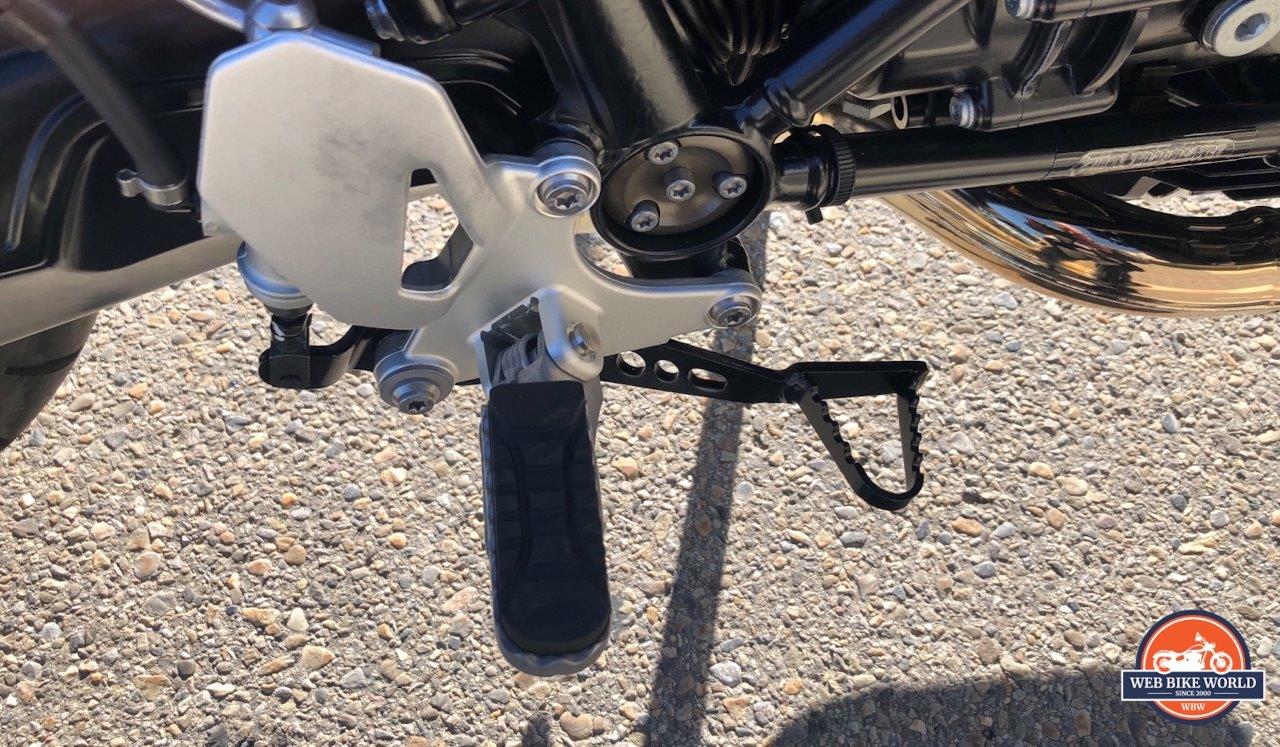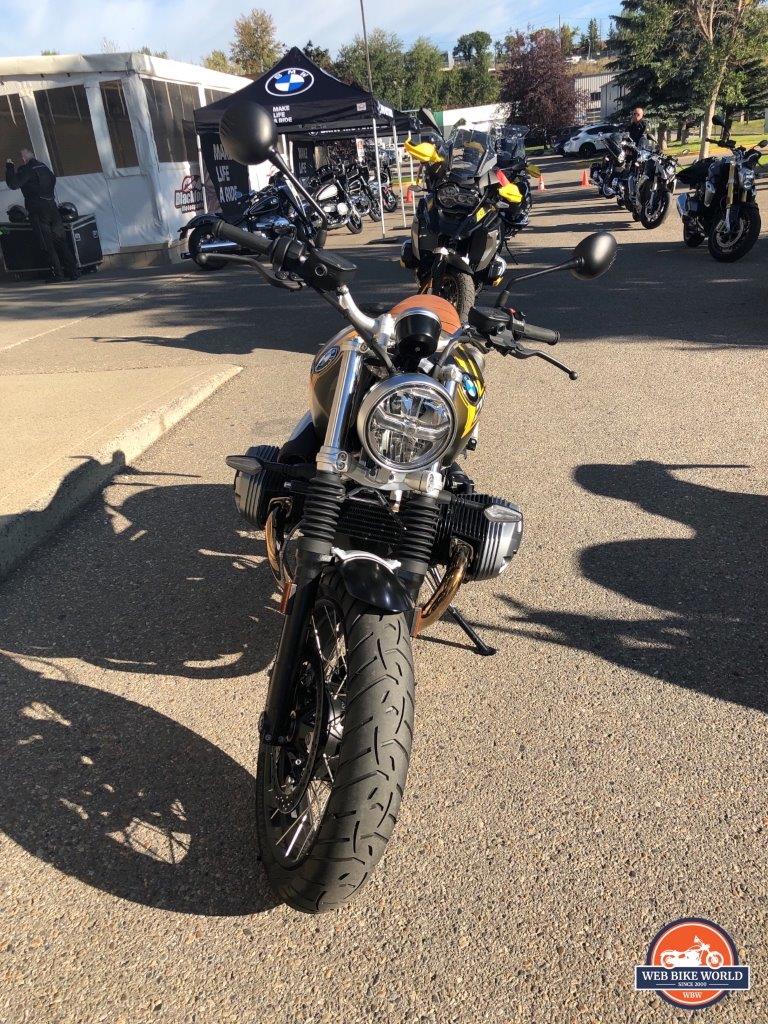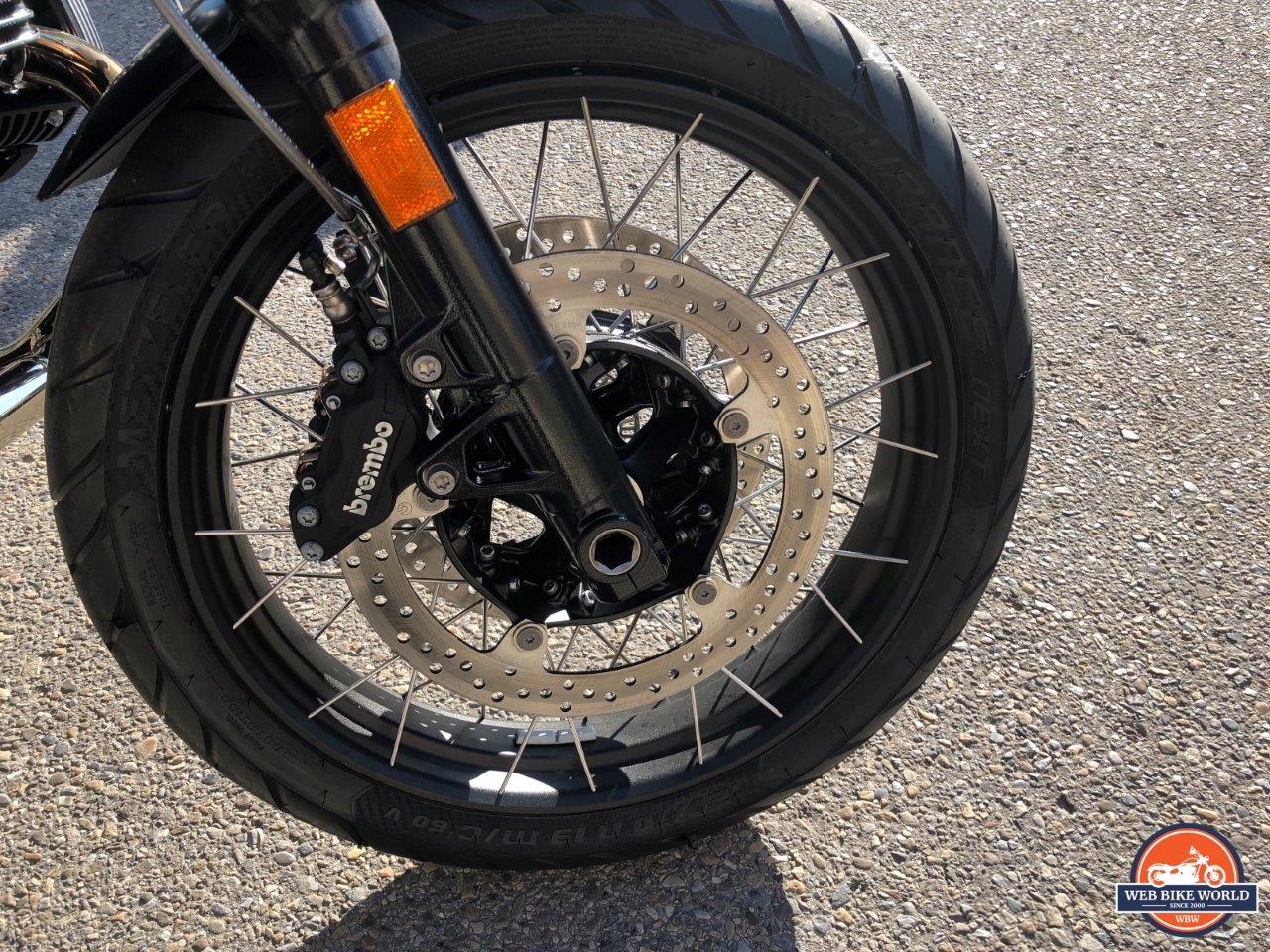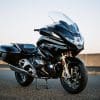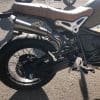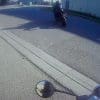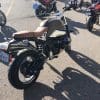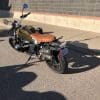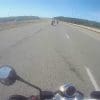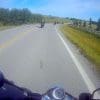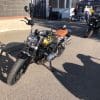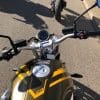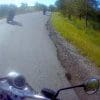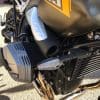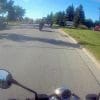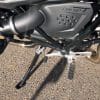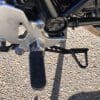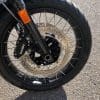Walking Up To A Little Piece Of Germany
Let me start off this review by first thanking BMW Motorrad Canada and BlackFoot Motorsports of Calgary for having the cross-Canada demo days event. For Calgary, it happened on September 3, 2021, with the first ride going at 9:30 AM on a fairly chilly day so as to give that first batch, which included a few content creators, myself included, in the group extra ride time. Our arrival time was at 9:00 AM to give us a few extra minutes for photography and asking the BMW and Blackfoot representatives at the BMW tent specifications and pricing on the bikes.
As I have stated in many of my reviews, I am not the smallest of people. I’m 6’1” and 280 lbs depending on if I had a big breakfast or not. When I received the invite to the event, there were multiple bikes to choose from, ranging from an F750 GS all the way up to the newest big boy on the block, the R18 Cruiser. I was pondering choosing one of the adventure touring bikes when I saw that on the list, the retro-styled, lightweight R NineT Scrambler was on the list, and my mind was made up.
Ever since sitting on one at the 2020 Calgary International Motorcycle Show, the R NineT has been on my “I really want to try one of those” list. So what better opportunity to try one than on an official demo ride, with a long cruise route set up?
September 3 here in Calgary started out really cold – probably only 50 degrees Farenheit – so I rode out to BlackFoot Motorsports in my cold weather Tourmaster Pants, Alpinestars Andes V3 Touring jacket, ICON Super Duty II gloves, Forma Trace boots, and my HJC i10 helmet fitted with my SENA 10C Pro comms and camera system.
Walkaround & First Impressions
When you look at pictures of the R NineT online, the one thing truly missing is a sense of scale. Walking up to the bike, tucked away amongst the big adventure bikes and the sleek pair of S1000RR’s is what looks to be a midget of a bike. While small in comparison to the big bikes on the demo ride, the R NineT Scrambler is, in fact, only slightly smaller than my own 2012 Kawasaki Ninja 650.
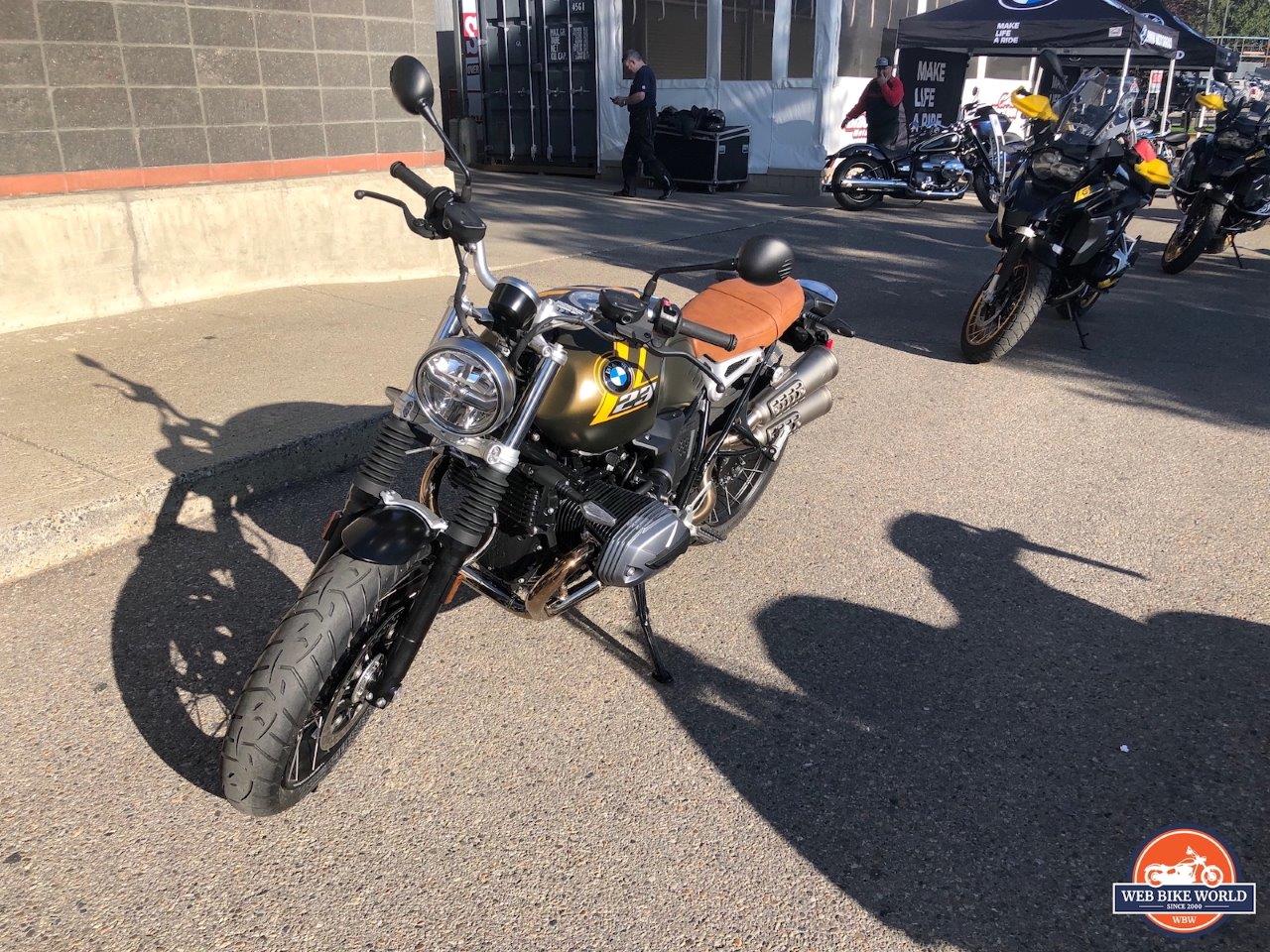
The Scrambler is 85.6 inches long, with a wheelbase of almost dead on 60 inches. Because of the boxer engine, it is 34 inches in width at the widest point. The handlebars, the highest point on the bike, come up to 52.3 inches, with the seat at a slightly low 32 inches, compared to the 33.5 or so for the Ninja 650.
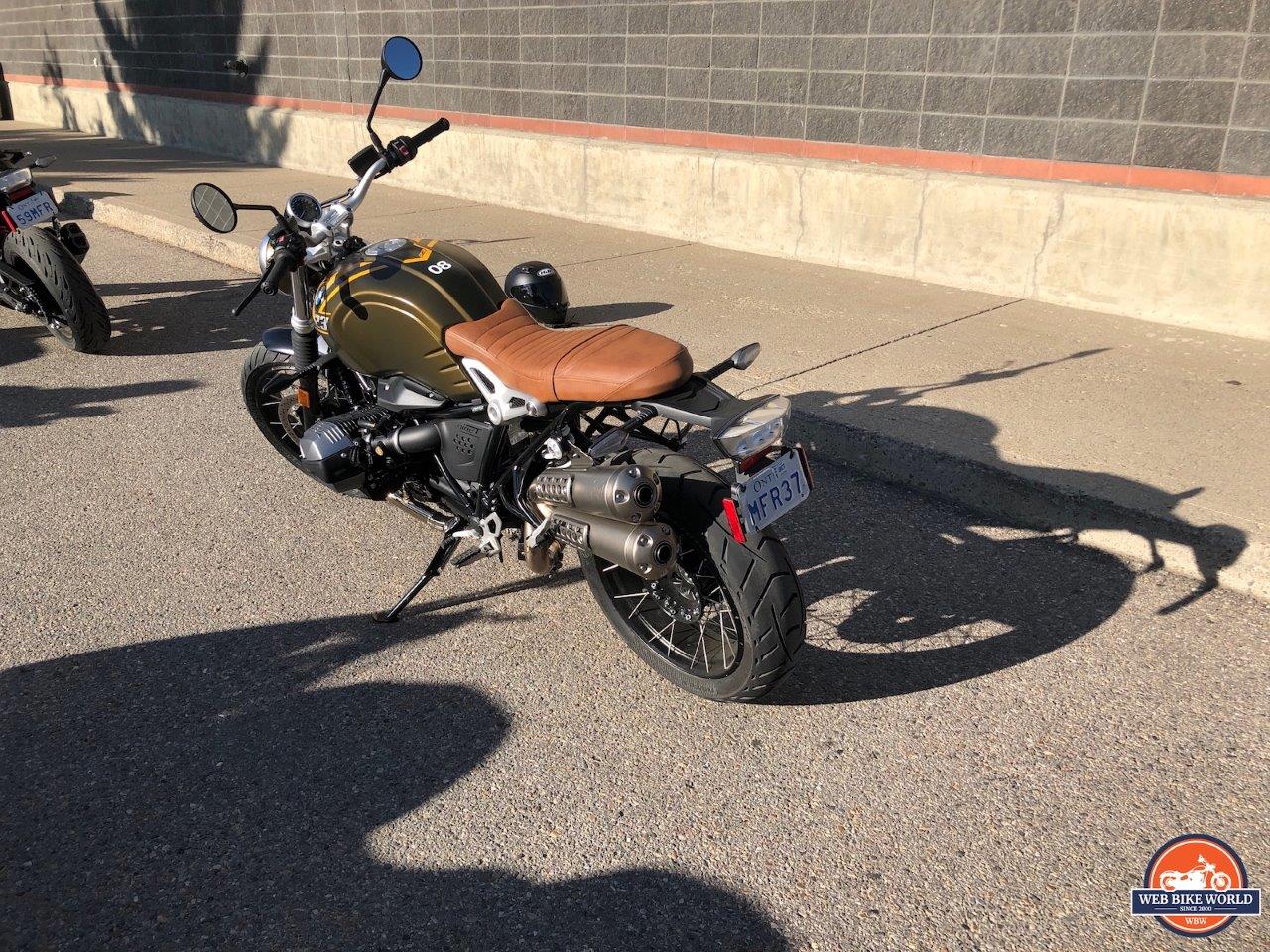
The Scrambler aesthetic is very prominent from the left rear ¾ approach, as the high slung twin exhausts, which are made for the bike for its standard specification by Akrapovic, sit tight up to the long, low bench seat with parallel stitched fine leather. The pronounced cylinder head of the boxer engine in front of the peg and shifter on the left side just adds to that feel of this being a special little monster.
It is, in many ways, an absolute minimalist bike, and after seeing the absolutely monstrous thumb control pads on the adventure bikes in the lineup, I came to have a serious appreciation of how simple the button boxes on both my own bike and the Scrambler were. In fact, the instrument cluster of my Ninja 650 has more information as standard on display than the ultra-minimalist R NineT because the bike is meant to evoke feelings of the time when all you actually had on your bike was the speedometer, and that was it.
On the left-hand button box, you have (top to bottom, left to right in the image above) cruise control switch, hazard flashers, menu select which cycles through trip meter/secondary trip meter/riding mode/settings/odometer, traction control on/off button which you need to press for 5 seconds to disable traction control, turn signals, and horn. The right side box is even simpler, with the built-in grip warmers (a nice standard piece of kit!), riding mode quick select, and combination kill/ignition switch.
Coming around to the other side, the rear right three-quarter view of the bike includes two pieces of the R NineT Scrambler that impressed the hell out of me. The first was that while many adventure bikes and scramblers out there have chain final drives because of the potential movement the rear wheel will need to go through, BMW took the more sophisticated and very German approach of engineering in a shaft drive that could do the same thing.
The other thing that impressed me about the rear right ¾ of the back was the single-sided swingarm. While some companies will simply slap a slab of metal in there, spring it, and call it a day, BMW didn’t. Instead, they made the swingarm evoke the sense of a complexly engineered scaffold, meant not to hold the rear wheel, but carry that shaft drive, the rear brake line, and the ABS sensor as its primary function.
Serious design and engineering credit to BMW here, it is one of those small details that makes a bike feel special.
The last bit of the walkaround that caught my eye was that the airbox intake intentionally is an asymmetrical part of the bike, and it is also on the same side as the single-sided swingarm. And it is not what you would call inconspicuous…
What the BMW Motorrad Canada representative dubbed the “Big-Ass Snorkel” sits tight to the right side of the frame, slung just so under the fuel tank. One of the neat things about the design of the intake is that as it’s intaking fresh air, it passes under the right leg, with the big “nineT” plate holding your knee and leg just enough away from the bike to not touch the intake header heading to the right cylinder. Just another one of those details that shows that BMW was paying attention in the design studio.
After walking around the bike a couple of times, I kept noticing more and more small details that, with the bike being as minimalist as possible, seemed to be there to make the bike feel like the $12,995 USD / $14,900 CAD is money well spent. I’m not saying that these little details are superfluous, but more that the design and engineering team took the time to make the details just that tiny bit over-engineered, just that tiny bit more special, to let you know that you’re paying for that German attention to detail.
A small highlight reel of those details are:
- Quality welds, with the exhaust header tucked completely out of the way and the heel plate that has an aesthetically pleasing cutout, matching the open feeling of the bike
- The right-side foot brake is not just a piece of metal, but a big, grippy triangle, through a drilled lever, that pushes against a hydraulic shaft behind the heel plate in a very German artistic-but-functional manner.
- The entire look of the fork tree area. Chromed, with a dual-level LED headlight in a very classically retro chrome surround, over black compression covers, and blacked-out suspension members, as those are the areas that will hit the most dirt and shrubbery if you were to actually go scrambling.
Engine & Drivetrain
Of course, the biggest thing, quite literally, about the R NineT Scrambler are the two massive cylinder heads poking out each side of the frame, in front of the lower foot controls. The 1,170cc combination air-and-oil cooled, four-stroke flat-twin boxer engine produces 109 HP and an absolute boatload of torque, 86 lbs-ft. The engine is also very slightly off-center, with the left cylinder poking out about half an inch more than the right cylinder, so that the crank itself inside the engine is directly on the center line.
The design is quite important for BMW, as, throughout the entire lifetime of the company, they’ve built radial and horizontally-opposed (boxer) aircraft engines, v-twins, parallel twins, inline-fours, and even single cylinder thumpers. The most classically used of all those types, however, is the boxer, as it still is the type that when you look at the crank dead on from the front, looks like a propeller spinning.
Boxer engines also carry another important design and engineering aspect, as they are, quite literally, flat engines. This allows them to be mounted very low in the frame, as in the R18 Cruiser, or near the yaw center of the bike’s center of gravity, as in the R NineT Scrambler. As a bit of an aside, this is also why Subaru rally cars had a dominant decade in the World Rally Championship, as their engines were very low, keeping the car’s center of gravity low and giving them excellent handling.
The power from the engine is passed through a constant helical mesh 6-speed gearbox, with a single plate dry clutch, both hydraulically operated. This is then transmitted via the output shaft of the transmission longitudinally to the sealed shaft to the rear wheel. Instead of coming out a lateral side of the transmission, this longitudinal exit allows for the bike to be extremely narrow in the middle, which lets the riders’ knees and legs to more naturally clamp to the sides of the bike.
Big Guy, Small Bike: The Ride
Startup & Familiarization
After pictures were taken, licenses checked for the class 6 (motorcycle) endorsement, sheets waiving suing if we somehow ended up dead on the ride signed, and all that red tape was done, it was time to get familiar with our steed of choice.
After swinging a leg over that lovely leather seat of the R NineT Scrambler, I sat down to find that it wasn’t really all that plush, at least compared to my own bike. However, after a little bit of wiggling around and getting nestled into it, the seat suddenly seemed to naturally follow the perineal and coccyx regions of my lower body and it just made sense. Granted, I am blessed/cursed with wide hips and a pretty muscular posterior from years of rugby and martial arts, so a person with narrower hips may find their comfort on the seat much quicker.
After adjusting the mirrors to where I could see mostly behind myself, I pulled in the clutch lever. Now, coming from a cable-operated wet multi-plate clutch on the Ninja 650 to a hydraulically-operated dry single-plate clutch on the R NineT, the feeling was about as polar opposite as you can get. Instead of having to slowly let out the clutch to feel the bite point with the engine running, the instant that single plate clutch parted ways, I could feel it, even through the hydraulics.
I don’t know how to better explain it, but there was just a slight notch in the feel of the level pull, a very light pop that probably moved the lever a micron, but it is just enough to let you know the clutch is disengaged.
With the clutch in, the key to ignition, kickstand up, and neutral selected, my thumb finally clicked down, then slid down, the ignition.
What happened when the engine kicked over made me grin like I had lost a few marbles, as the entire bike wobbled side to side as those cylinder heads went whap whap in the starter out to the sides of the bike before the petrol ignited and the whole bike shivered. Not a cold shiver, but a “C’mon, let’s GO!” shiver. Since my body was in contact with the bike, that shiver passed up through me and made the goody-good chemicals in my brain sing happily.
I was so enthused about the feeling that I turned to one of the other content creators on the ride I had been chatting with before mount up was called, who was doing a ride review of the 2021 BMW S1000RR, and yelled out “It kicks! It kicks with the boxer!”
Pardon my mild enthusiasm 😉
I then gave the bike a good rock forwards and back on the front brake, to get a feel for how much dive, if any, the suspension would give if I needed to do emergency braking during the ride. Then I did the same with the rear brake.
I am going to take a moment here to talk about those brakes and that suspension. As this is a proper German bike, engineering is very important to BMW, and so they went to the best in the business, Brembo, for their discs and calipers. The brakes needed very little pressure at a standstill to completely stop the wheels turning, and both front and back brakes have ABS, managed by BMW’s own ABS Pro system.
The discs are also massive on the front, with 4 piston calipers clamping dual floating 320mm vented steel discs. The rear brake is a single 265mm vented steel disc with a 2 piston floating caliper, with the disc mounted between the wheel spindle and the 90-degree differential at the end of the power shaft. These brakes are, in a word, superb, as I will detail a little later on in the ride.
Back to familiarization, I quickly flipped through the left thumb menu control to see what would show and went through the ride modes on the right thumb control box. In keeping with the simple minimalist nature, there are only three ride modes: Road, Dirt, Rain.
Leaving it in Road mode, I toggled around the traction control, and it can be set to three main settings: On, Sport, Off. I left the traction control fully on, as this was an unfamiliar bike and I didn’t want my insurance to have to suddenly payout for the binned, twisted wreckage of a BMW!
After a few more moments, the lead rider raised his hand in the “Let’s ride, fellas!” signal, and one by one, we set off.
The First Ten Minutes
We exited the parking lot of BlackFoot Motorsports onto the side street that the main entrance faces. This is particularly nice because that side street gives the option of heading towards the very busy BlackFoot Trail, or winding around behind a few industrial shops to a much less busy area so that the group ride could leave in one big clump of riders.
Being the professional that I am, once we got out of the parking lot, I was very gentle with my throttle approach. With my Ninja, there is a few millimeters of dead zone and then the throttle picks in quite a linear fashion, so I approached the R NineT’s throttle from the viewpoint of “this is not the Ninja 650,” and I am very, very glad that I did.
The engine in the R NineT Scrambler is almost twice as large as the engine in my bike. Both bikes weigh in within about 5 lbs of each other at 485 lbs for the Scrambler, and 490 lbs for the Ninja 650. The biggest difference in power delivery, however, is that the Ninja 650 is a cable-operated throttle, and the R NineT family, since 2020, are ride-by-wire.
So when I dialed in a little twist of power, I did so smoothly, and the ride-by-wire responded by surfing me on the crest of a wave of torque that rumbled up from that gigantic engine. 86 lbs-ft may not sound like a lot, but when it is accompanied by 109 German horses and the two dig their hooves in and push, the bike simply sits up and goes.
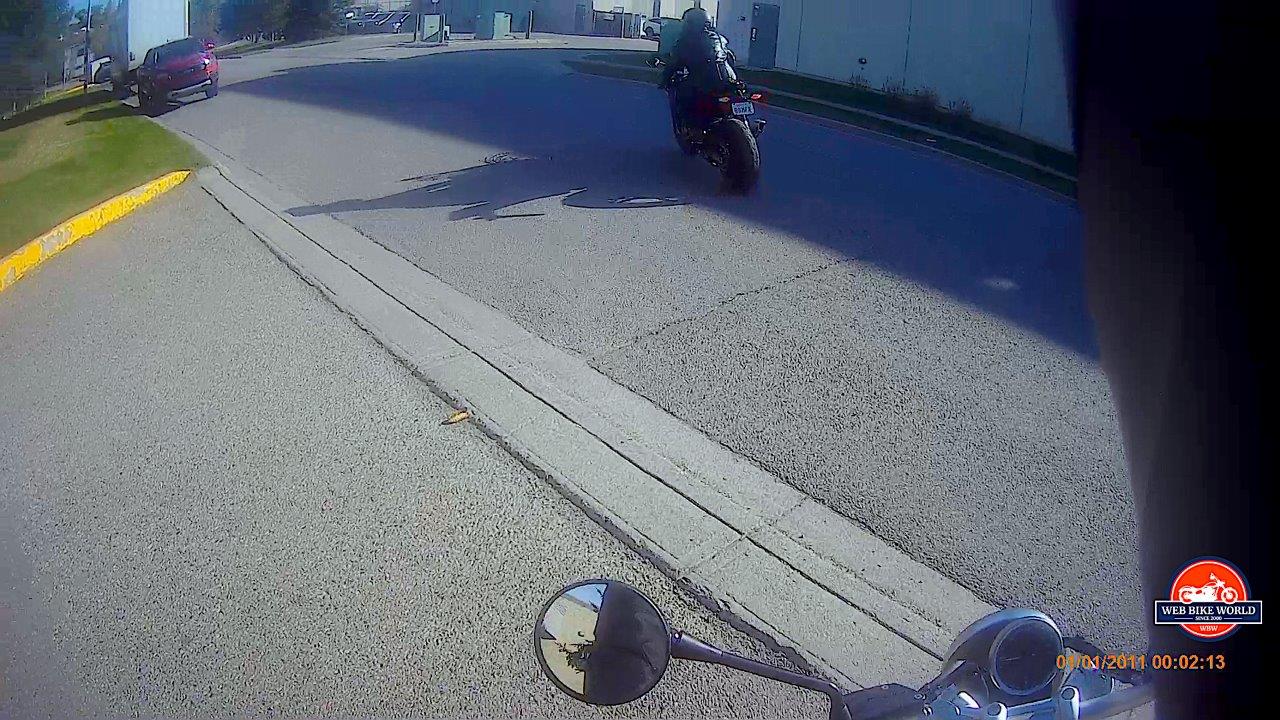
The power delivery is also very smooth with gentle throttle adjustments, far smoother than any inline-four or parallel-twin I’ve ever swung a leg over. With tiny throttle adjustments, I found that surfing the crest of that wave of torque was almost instantly natural.
Coming to the first stop, just a few hundred feet down the road from the parking lot, the brakes got their first real tryout of stopping a combined 765 lbs of inertia, and I am happy to report that the feel through the front lever is superb. Bite is initially a little grabby, as the brakes were cold, but within a second it was communicative and very open to modulation. The rear brake was also initially grabby, and I did add a bit too much force at first, but the traction control system and the ABS system kicked in, and in the fraction of a second between their interruption and my lifting my right foot, all I received was a tiny little tail wag of the bike.
After that first stop, we got onto the first major road of the ride. This is a varying 50 and 60 KPH speed limit road and is not what one would call being in the best repair. It is not completely falling apart, but it is quite bumpy, which was intended to show off the suspension of the motorcycles.
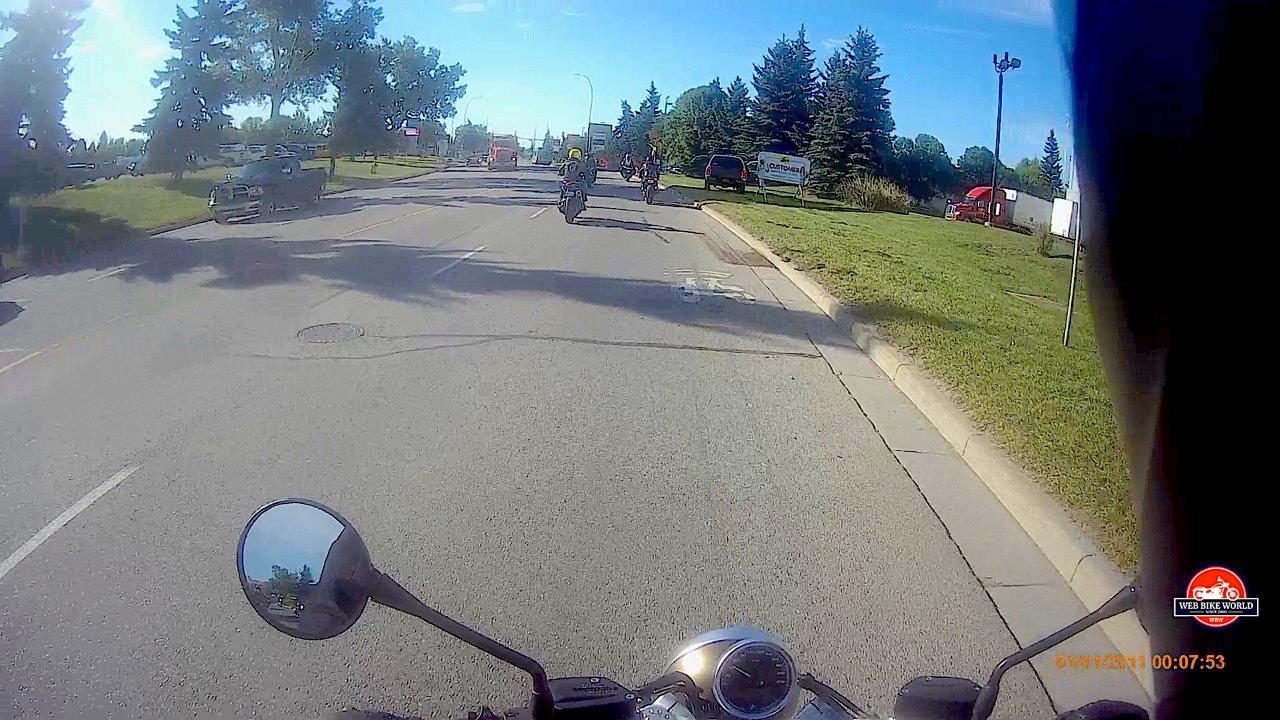
During this portion, I started off in “Road” mode, and the suspension, while stiff, did an adequate job of absorbing most of the big bumps. After a few lights, approaching the 60 KPH section of the road, I noticed that there was construction dust and some gravel on the road, so I flipped the bike to “Dirt.” This let the steering damper, mounted inside the front fork mounts, have slightly more leeway, and put the Automatic Stability Control into “oh, we’re going to have fun now” mode.
Throttle response was sharpened up a little, for those times you would need short bursts of torque to scramble over a rock without sending the bike flying, and with all that working together, the R NineT Scrambler rode through that loose dirt and gravel patch as if it didn’t even notice it was there. Very impressed by the technology modern bikes carry.
Riding The Highway
Now, if I thought the bike had some serious get up and go on normal 50 and 60 KPH roads, when it came time to get onto the fastest, biggest, and frankly scariest road to ride a bike on in Calgary, namely the Deerfoot Trail expressway (what Americans label as a Freeway), I was suddenly transported from riding a small, lightweight scrambler to riding a small cruise missile.
The group took one of the longer on-ramps to Deerfoot Trail, which joins the road just before it splits from a 5-lane expressway to a 3+2 Y junction, the 3 left lanes continuing as Deerfoot, the 2 right lanes becoming Anderson Trail, one of the biggest arteries of Calgary’s SouthEast and SouthWest.
The group was fortunate to catch a red light just before that onramp. Because I wanted to get a good feel of what the R NineT Scrambler would do when given a sudden request for power, I left a good gap between the S1000R in front of me (which has an awesome exhaust sound from the factory!) and then, as we merged onto Deerfoot Trail, gave it some stick.
I don’t know which surprised me more, my jubilant screaming of “Ha haaaaaaa!” or the fact that the bike, with moving the throttle about 3 centimeters in the go direction, all at once squatted a tiny bit over its rear tire, jumped about 2,500 RPM upwards in less time it takes to blink, and absolutely catapulted me down the road. I was going at 70 KPH when I moved my wrist, and once I had stopped screaming my head off in joy, I was sailing along at… well, some speed that is perfectly acceptable and legal on Deerfoot Trail (ahem).
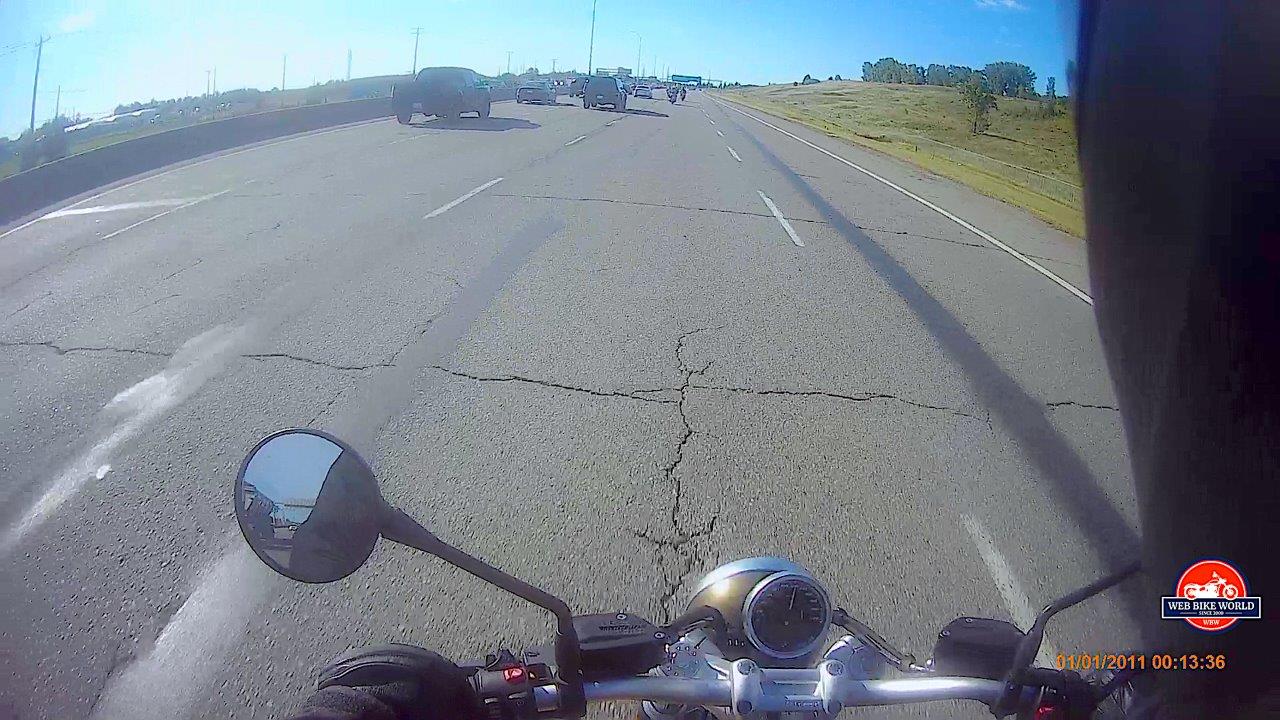
After gathering my marbles back together to the little bag where they live inside my head, and of course continuing to ride at the group pace, which was perfectly acceptable and not at all above the speed limit of 100 KPH (cough), the only two real complains I have about the R NineT Scrambler reared their heads up and showed themselves to me.
First of these is that the lack of any kind of fairing or windshield is extremely apparent, especially in a city that gets as much wind off the Rocky Mountains as Calgary does. The city is located at a perfect confluence of the jetstream and the warm, moist air coming from British Columbia that is cooled rapidly as it passes over the mountain peaks. As expected, once out of the relative protection of the actual infrastructure and buildings of Calgary’s rapidly developing South end, the wind was gusting pretty strongly.
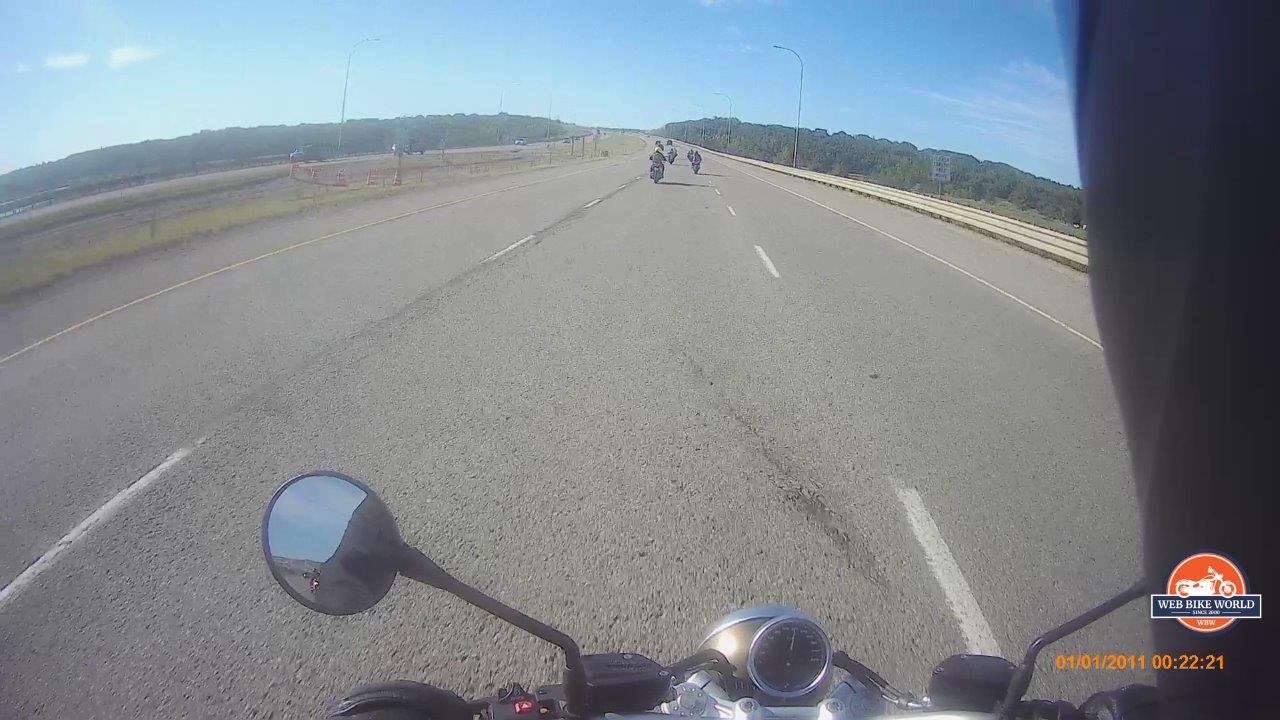


Now, as I have mentioned, I am a big guy. Mostly I talk about this in terms of height and weight, but in this specific case, I am speaking in terms that I am wide-shouldered and wide chested. “Stocky” I believe is the correct terminology. However, “sail” might be more appropriate when talking about taking a gust of headwind. On my own bike, I will often tuck down a little to get my shoulders out of the air being deflected up by my windshield. On the R NineT, there is nothing. The only wind protection offered is for the feet and shins, and that’s by nature of the boxer engine’s cylinder heads sticking out.
In the process of keeping myself on the bike and comfortably riding, I found that I had to squeeze my knees a little harder than I do on my own bike. Any rider knows it’s your thighs and knees that give you 90% of the control of your bike, the handlebars are just there for occasional countersteering and a place to have your hands operate the controls. With the R NineT Scrambler, that firmness of the seat I talked about much earlier came back to bite.
Flexing your gluteus maximus, quads, and hamstrings to hold your knees to the side of the tank brings the inner thigh against the side of the seat. On the Ninja 650, the tank is shaped wide at the front, narrow at the rear, with large, smooth areas to put your thighs against, and the seat doesn’t start until it’s at your hips. After about five minutes of this, the insides of my thighs were noticeably sore, from pushing against the hard edge of the seat.
The Back Roads
About 2.5 KM, or just over a mile, South of the Calgary city limits lies a small intersection to a side road called Dunbow Road. This leads to the small hamlet of DeWinton, with a population of just over 2,000. What it is to motorcycle riders, however, is the gateway to many of the popular back roads that are South and SouthWest of Calgary.
Most of these roads vary in their speed limits, but the average by a large margin is 80 KPH. Of those, many are long, straight patches of pavement, with the occasional good curve. What is more important is that many of the public side roads off these back roads have not learned the word “straight,” and wind their way along natural pathways, through trees, between ponds and small lakes, and are an absolute hoot to ride.
It is along a few of these more popular side roads that the group ride headed to, to give those of us on the sportier machines a good opportunity to get our lean on. During the ride down a couple of the 80 KPH roads as we headed for the twisties, my first and most obvious thought about the NineT Scrambler was the fact that a crucial part of the bike, the cylinder heads, stuck out quite a ways from each side of the bike. A hard lean, or even an overly fast first gear 90-degree turn while counter-leaning might see the cylinder heads touch.
When we got to one of the short, 2 KM long twisty side roads, I discovered that my concern was mostly unfounded. Most of the time, the little straights between the corners are taken at 50 KPH (the speed limit on those roads), and you can get some great trail braking practice shifting a gear down to take the curves. These curves are where I discovered that the R NineT Scrambler simply comes alive under you.
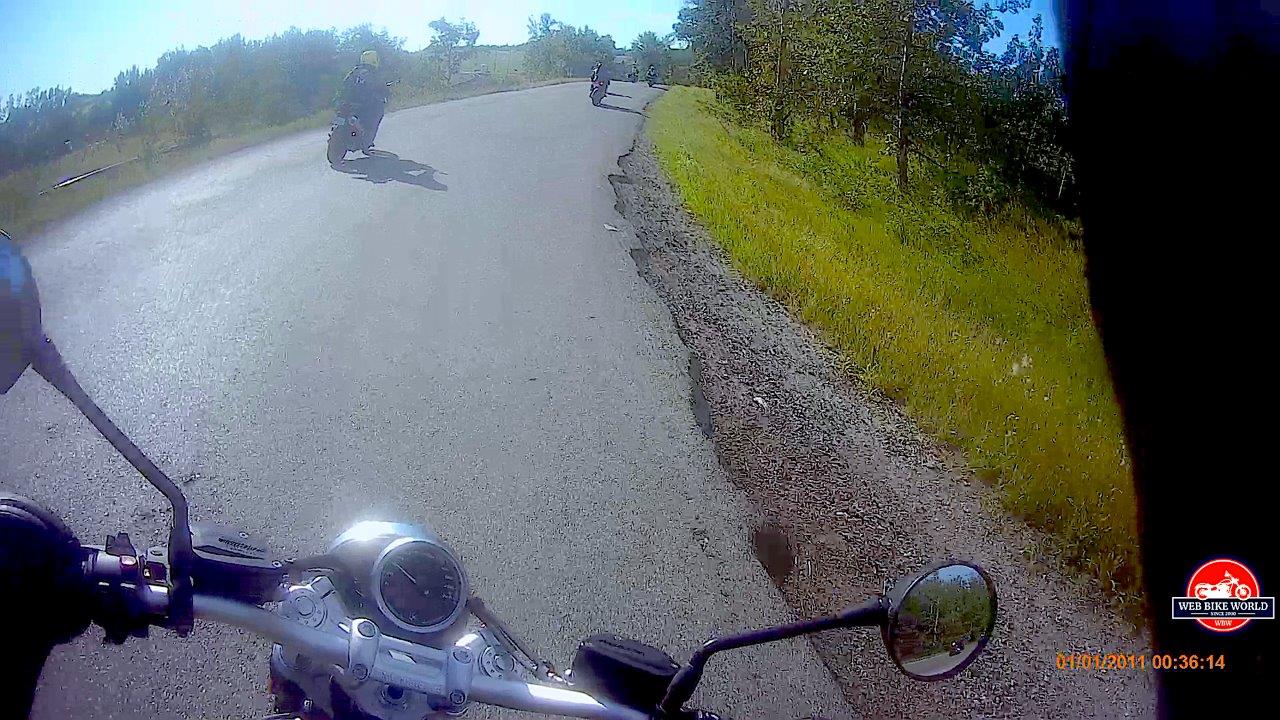


The first corner, a shallow right-hander, the BMW responded to my knees and my forward and right tuck by settling into a lovely angle with a tiny bit of countersteer. With a clear view ahead because of no fairings or windscreen, Slow-Look-Lean-Roll became the order of the day. Rolling out of the corner while increasing throttle and snapping that gear lever up one got the grin started.
The R NineT simply loved getting over on the side of its tires, and seemed eager to flick back upright when I stopped giving inputs for the lean. There was also a short right-left chicane-style corner along that back road, and that agility showed again there. For a moment, it didn’t feel like I was riding a naked or a scrambler, but a 600cc supersport, it was that agile.
Also, during these back road runs, the suspension proved to be very strong as well. Under braking, there was no serious diving, and the brakes stayed true and bit well when asked to, even after repeated use in a short while. I wouldn’t take the R NineT to the track and expect the brakes to last in that sort of use, but for backroad twisties and canyon carving, I suspect that this little bike is ready to do it all day, every day.
The Ride Back & Verdicts
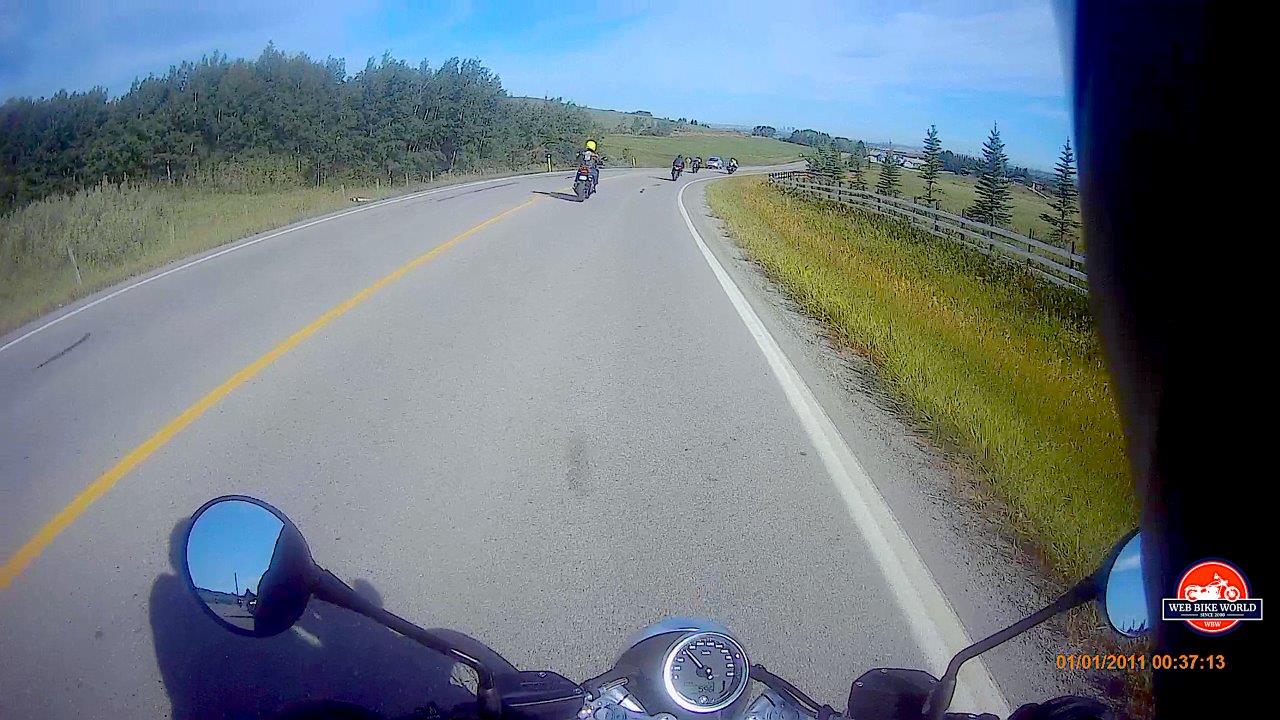


After a couple of other twisties where I found that the R NineT Scrambler loves to corner aggressively, it was time to get back into Calgary for the ride back to BlackFoot Motorsports. We headed back up the highway we had come down, Deerfoot Trail, and pretty soon we came to the offramp that would take us back to Blackfoot Trail and, of course, Blackfoot Motorsports.
I took this time to really think about what the R NineT Scrambler had shown me through my 50 or so minutes on the seat so far. Of course, I was paying attention to my riding, but because of the confidence the bike gave me, I could spare 1% of my focus to quickly talk into my comms for the camera recording what my thoughts were, and expand on them in this review.
As such, my verdicts are thus:
Engine & Power
Don’t underestimate the low figure of 86 lbs-ft, or the “meh” 109 HP from a nearly 1.2-liter boxer. With a compression ratio of 12:1, that engine has grunt from 1,500 RPM all the way to redline at around 8,700 RPM. In fact, maximum torque kicks in at 6,000 RPM, and maximum power as 7,250 RPM.
The engine simply delivers. Any RPM, any gear, just add throttle, and the bike responds. Without having ridden a proper V-twin or a 1,000cc supersport yet, it is the most immediate, impressive, and responsive engine I have ever had the joy of being slung below a pool of explosive liquid that I have then sat upon.
Dynamics & Handling
It’s perfectly fine to have a bike that can get up and go like it’s been shot, but if it can’t take the corners and respond to input in a timely manner, it’s not going to get very far. This is probably what was the biggest surprise of the entire ride for me, coming from a sport-touring bike as my day-to-day ride. The R NineT Scrambler simply loves corners.
With only one activation of stability control in the first 90 seconds out of the parking lot, the way the bike responded to every tiny adjustment when being pushed maybe 30% of its capabilities in the twisty back roads was mindblowing. It braked hard without diving or lifting the rear tire, it almost begged to be flung on its side, and it kept the rear wheel planted and stable when rolling on the power out of a corner.
As I mentioned in my actual ride description, the R NineT Scrambler responds to inputs almost like a 600cc supersport. It is light, agile, loves to be flicked side to side, and gives you confidence that it is not about to toss you into a highside or slide out into a lowside.
Comfort & Accessories
With all good things come some bad. I can appreciate that the seat on the R NineT Scrambler is made of premium leather, but I wish that there was a bit more premium foam in it. There is a high seat option, that adds almost another inch of padding for taller riders, and I feel that if the demo bike had the high seat option fitted, I would have found myself both more comfortable at the offset, and without my inner thighs hurting.
What I do like about the standard accessories on the bike, however, is that a grip heater is standard, electronic cruise control is standard, traction control is standard, stability control is standard… Pretty much every driver safety and comfort aid is standard. Most of the options, as I found out when talking to the BMW rep after my ride, are in terms of looks, a few engine-specific things like electronic engine braking control or less baffling in the Akrapovic exhausts, and different wheels.
Overall
After giving the bike one final little hoon from a stoplight just before we got back to Blackfoot Motorsports to get one final “Wooo!” out of me, I pulled up to where I had set off from and shut the bike off, put down the stand, and swung my leg off the bike. I had to take a couple of steps back and lift my visor to just look at and appreciate what I had just ridden for the last hour.
I was going through everything in my head about the way the bike felt, the strength of the brakes, the instant response of the engine, the flickability and confident handling, when the memory of a line from one of my old favorite car shows on TV popped into my head. I will of course credit it to the original person that said it, but in my mind, it sums up perfectly what I felt about BMW’s sporty little Scrambler.
It comes from Jeremy Clarkson, the opinionated and controversial motoring journalist and former lead host of Top Gear UK. When he drove the Bugatti Veyron against his co-presenters in a race from Italy to London, England, at the very end of that segment he said the following:
“I’m actually quite sad the race is over. I’m sad because I don’t think I’ll ever experience something like that again, having that much power, that much engineering, ever again.”
So to go my thoughts:
The 2021 BMW R NineT Scrambler may not be the most powerful bike in the world. It may not have the biggest engine, or the sportiest looks, or the grippiest tires. But what BMW has put together in that package, that beautiful example of precision German engineering, is something I was sad to walk away from.
I was sad to walk away because I wanted to ride that bike until the fuel tank ran dry. Inner thigh pain and thinly padded seat be damned – if that doesn’t tell you my verdict on the bike, nothing else will.


